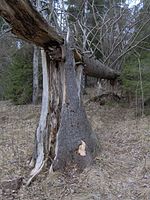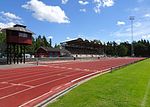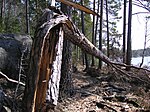Flemingsberg
Flemingsberg is a southern suburb of Stockholm, Sweden that is located in Huddinge Municipality in the south-western part of the contiguous Stockholm urban area. It is located approximately 15 minutes by Stockholm commuter rail from central Stockholm, or 20–30 minutes by car. Flemingsberg has 12,000 inhabitants, around 12,300 people work there, and there are about 13,000 students studying at Södertörn University. There is a railway station (Flemingsberg, formerly Stockholm Syd Flemingsberg), a major hospital, a university college and there are also colourful high-rise residential buildings from the 1970s. Flemingsberg has also evolved as a law enforcement center for the southern part of metropolitan Stockholm, with police station, court house, prosecutor's office and a jail, all in buildings built in the 1990s onwards.
Excerpt from the Wikipedia article Flemingsberg (License: CC BY-SA 3.0, Authors).Flemingsberg
Huddinge kommun
Geographical coordinates (GPS) Address Nearby Places Show on map
Geographical coordinates (GPS)
| Latitude | Longitude |
|---|---|
| N 59.219444444444 ° | E 17.941666666667 ° |
Address
Huddinge kommun, Björnkulla
Sweden
Open on Google Maps










